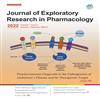
|
-
Natural active ingredient–based nanodrug delivery system for cancer treatment
-
Natural products (NPs) have present abundant scaffold diversity and structural complexity, and have contributed greatly in drug discovery efforts especially for anticancer drugs. As an example, Professor Youyou Tu was awarded the 2015 Nobel Prize for discovering artemisinin from Artemisia annua. While natural active ingredients are important sources of novel anticancer drugs, NPs often exhibit unfavorable physicochemical and pharmacokinetics properties, such as low solubility, poor bioavailability, and systemic toxicity, which limit their potential for clinical application. Thus, nanodrug delivery systems, such as liposomes, polymer colloids, carbon nanomaterials, metal-organic framework, and magnetic nanocarriers, have been developed to overcome the unsuitable properties of NPs and improve their therapeutic efficacy for cancer.
|